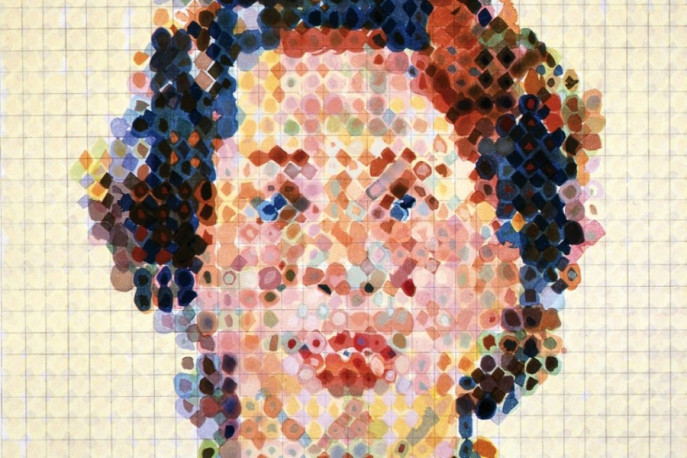
by Ellen C. Caldwell
for JSTOR Daily
The Frederick R. Weisman Art Museum’s retrospective “Chuck Close: Face Forward” features over 70 prints of artist Chuck Close’s portraits from the collection of Jordan D. Schnitzer.
Known equally for his subject (self-portraits and artist portraits) and his process (monumental grid-based, pre-digital “dots”), Chuck Close revolutionized the way viewers see photography, prints, and painting.
Close’s personal story is inspirational and his work influential. He is well-known for saying that art saved his life twice — as a child with dyslexia who took comfort in making art and as an adult after a spinal aneurysm left him paralyzed.
Close started making massive self-portraits in 1968, working within a grid to study and transpose segments of his face incrementally. From there, he continued to experiment with this signature style through varied methods, using different color combinations and painterly dots along with a wide array of printmaking techniques, all of which are represented in the show…
